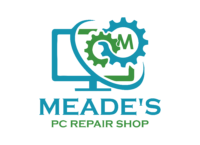Growth can feel like a green light — more revenue, more reach, more everything. But underneath that acceleration is a layer of friction most small businesses don’t see until they’re already sliding. Missed signals, over-hiring, vague agreements, tech hiccups, financial overreach — these are the hidden tripwires that cut good runs short. The mistake isn’t wanting more. The mistake is assuming momentum alone will get you there.
But growth and caution aren’t opposites. In fact, the smartest businesses grow precisely because they’ve structured for risk. These are the strategies that let you move fast without cracking your foundation.
Validate first — don’t assume they want it
Ideas are easy to fall in love with. But what feels urgent to you may not register with your market. That’s why early-stage validation is more than a sanity check — it’s a way to align excitement with evidence. Talk to customers. Analyze competitors. Run simple pilots or presales. Even modest efforts to understand unmet needs can reveal mismatches you’d otherwise miss. Strong launches begin with pressure‑testing, and resources built around market research basics make it easier to know what to ask, where to look, and how to adjust.
Document your working relationships, even if casual
In the rush to move fast, partnerships can begin as handshakes — a “we’ll figure it out” vibe that works right up until it doesn’t. But unclear boundaries and unwritten assumptions are growth killers. Before any serious collaboration, articulate what each party is contributing, what success looks like, and what happens if either side wants out. You don’t need binding contracts to do this well. Sometimes the right move is a written expression of intent — a simple agreement that outlines scope without legal teeth. Knowing how to create a letter of intent gives you structure without locking you in too early.
Contracts protect clarity — not just legality
Misalignment doesn’t always come from bad actors. Often, it comes from good people working from different assumptions. That’s why clear, up-front agreements matter — they surface expectations before they clash. Whether it’s about revenue splits, exit clauses, deliverables, or roles, the act of writing it down forces clarity. Taking legal steps to protect business relationships can stop future misunderstandings before they calcify into conflict. Structure invites alignment. Alignment reduces risk.
Invest in infrastructure that protects momentum
Every added layer — software, staff, automation, integration — creates new seams. And when one part snaps under load, the whole chain feels it. As you grow, system reliability can’t be an afterthought. That’s where outside support becomes not just helpful but strategic. Meade’s PC Repair Shop provides managed IT that keeps your operation running even when internal capacity is maxed. The most dangerous risks are the ones that escalate quietly — degraded performance, missed updates, weak credentials. Stability isn’t the enemy of growth. It’s what makes growth sustainable.
Don’t bet big — test small
You don’t need to roll out a nationwide campaign or a fully-featured product to know if something’s working. Small bets speak volumes. Launch a stripped-down version to a narrow group. Try a service offering on a limited basis. Set firm metrics for what defines “working” before you start. The key is to prove or disprove the idea before serious capital or reputation is at stake. When you test small bets before scaling up, you’re not playing scared — you’re moving with data, not guesswork. The best moves don’t shout; they whisper first.
Set money boundaries before enthusiasm runs wild
Scaling too soon doesn’t always look like recklessness — sometimes it looks like confidence. But financial exposure builds silently. Adding inventory, hiring staff, upgrading tech — each move stretches your burn rate. That’s why it matters to sketch out cash ceilings in advance. Know your monthly commitments, your fallback capital, and your “cut bait” scenarios. Businesses that map out the financial risks that most ignore tend to make better decisions under pressure. Money is the fuel, but also the fire. Without constraint, it consumes more than it builds.
Lock down operational reliability as you expand
Growth multiplies complexity. More users, more processes, more software — and more points of failure. Even minor outages or system issues that once felt manageable now ripple outward. What was once an inconvenience becomes a liability. Businesses that expand sustainably invest in infrastructure early — redundancy, patching, uptime monitoring, and access controls. It’s not about paranoia; it’s about margin. By prioritizing how you manage technology-related risk, you preserve the stability that expansion depends on. Your backend becomes your pace-setter.
Most risk isn’t catastrophic — it’s cumulative. A vague agreement here. A tech slip there. A cash burn that goes unnoticed until it’s too late. But when you operate with structure — not red tape, but scaffolding — you move faster, not slower. Each strategy above isn’t about hesitation. It’s about creating room to act without fear of collapse. Validate first. Cap your exposure. Protect your systems. Document your partnerships. Run micro-tests. What that gives you isn’t just safety — its velocity. And in business, the right kind of velocity beats blind momentum every time.
Discover unparalleled service and expert repairs at Meade’s PC Repair Shop – where your tech troubles meet their match with our quick and reliable solutions!



Recent Comments